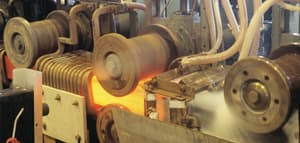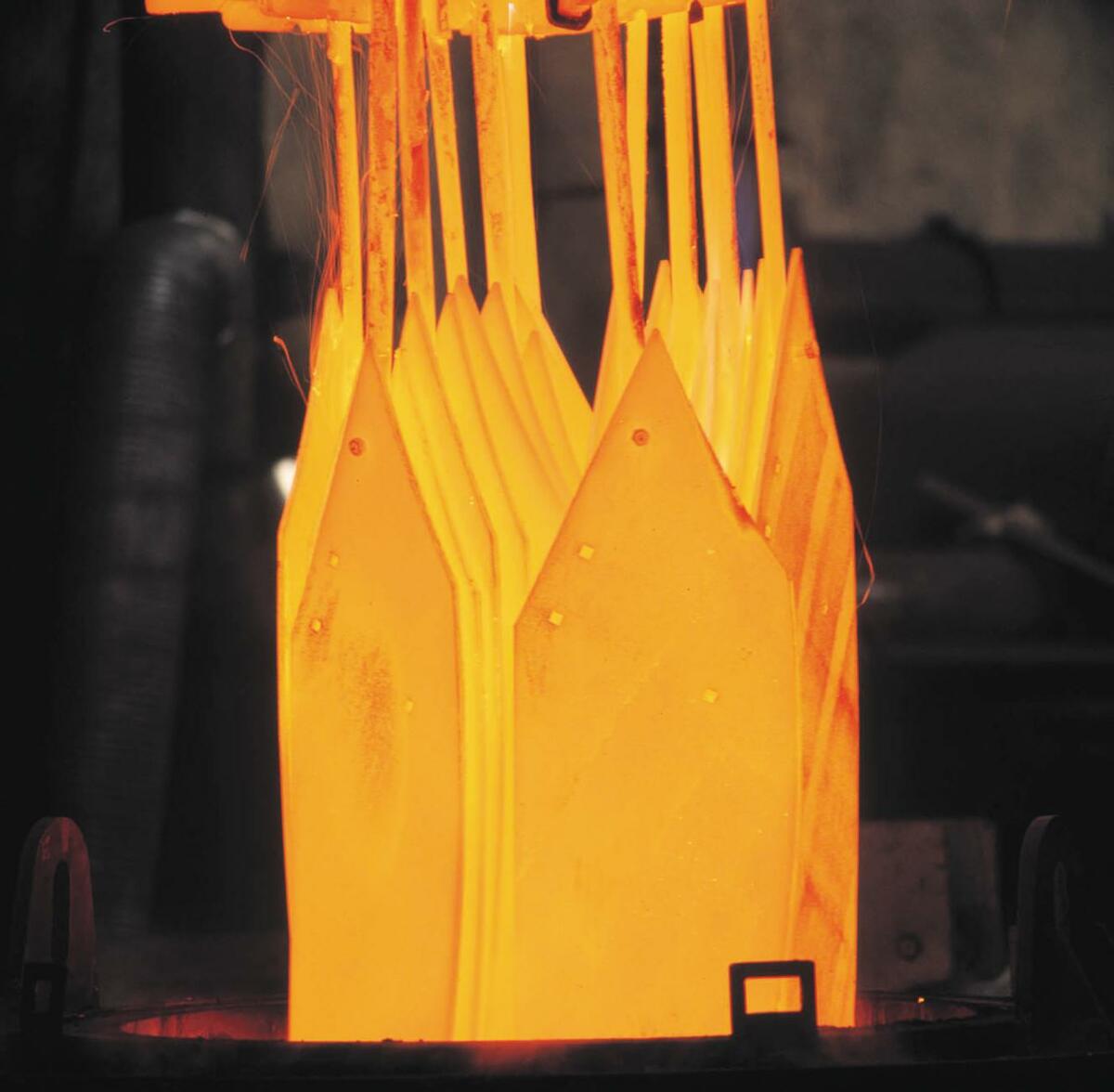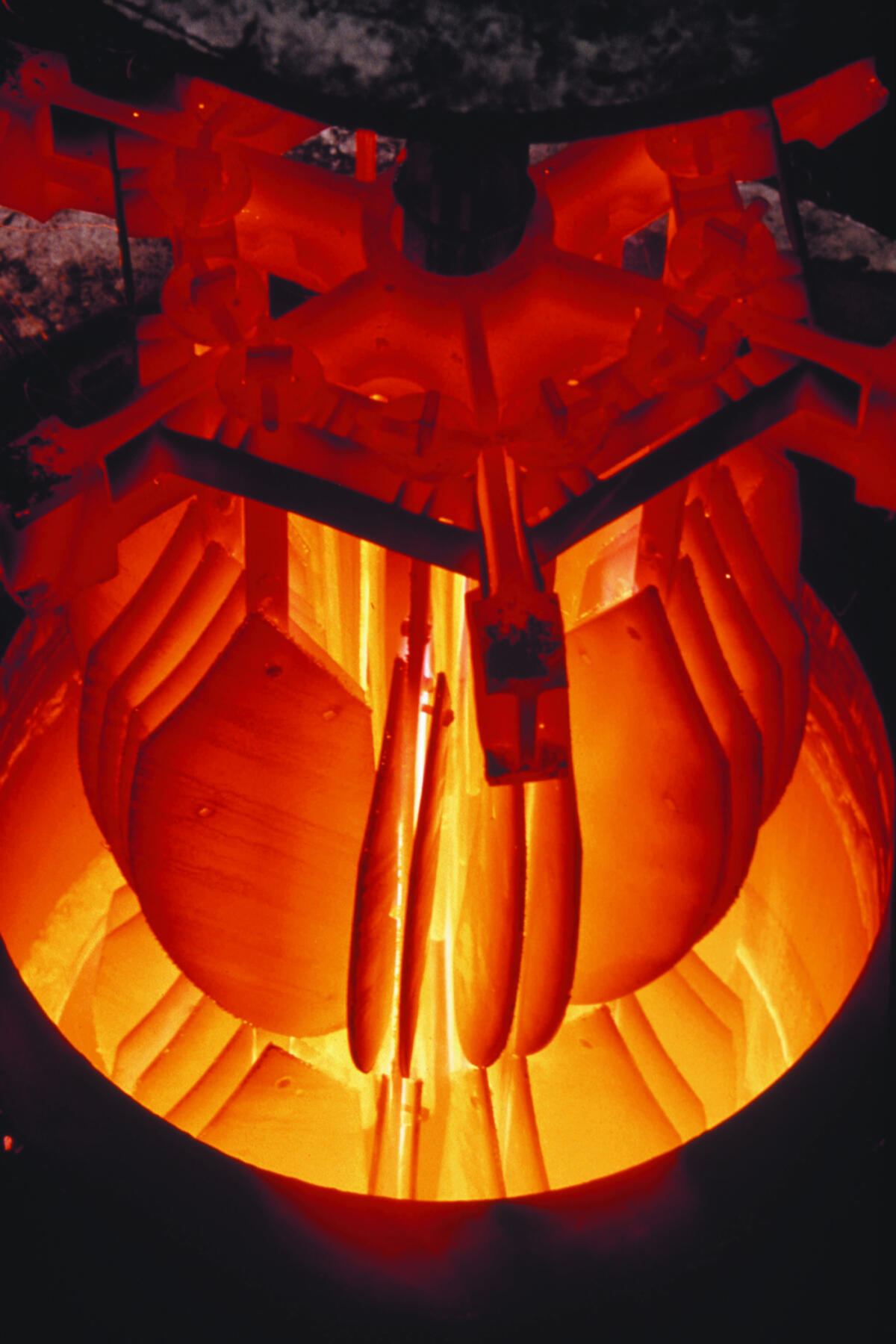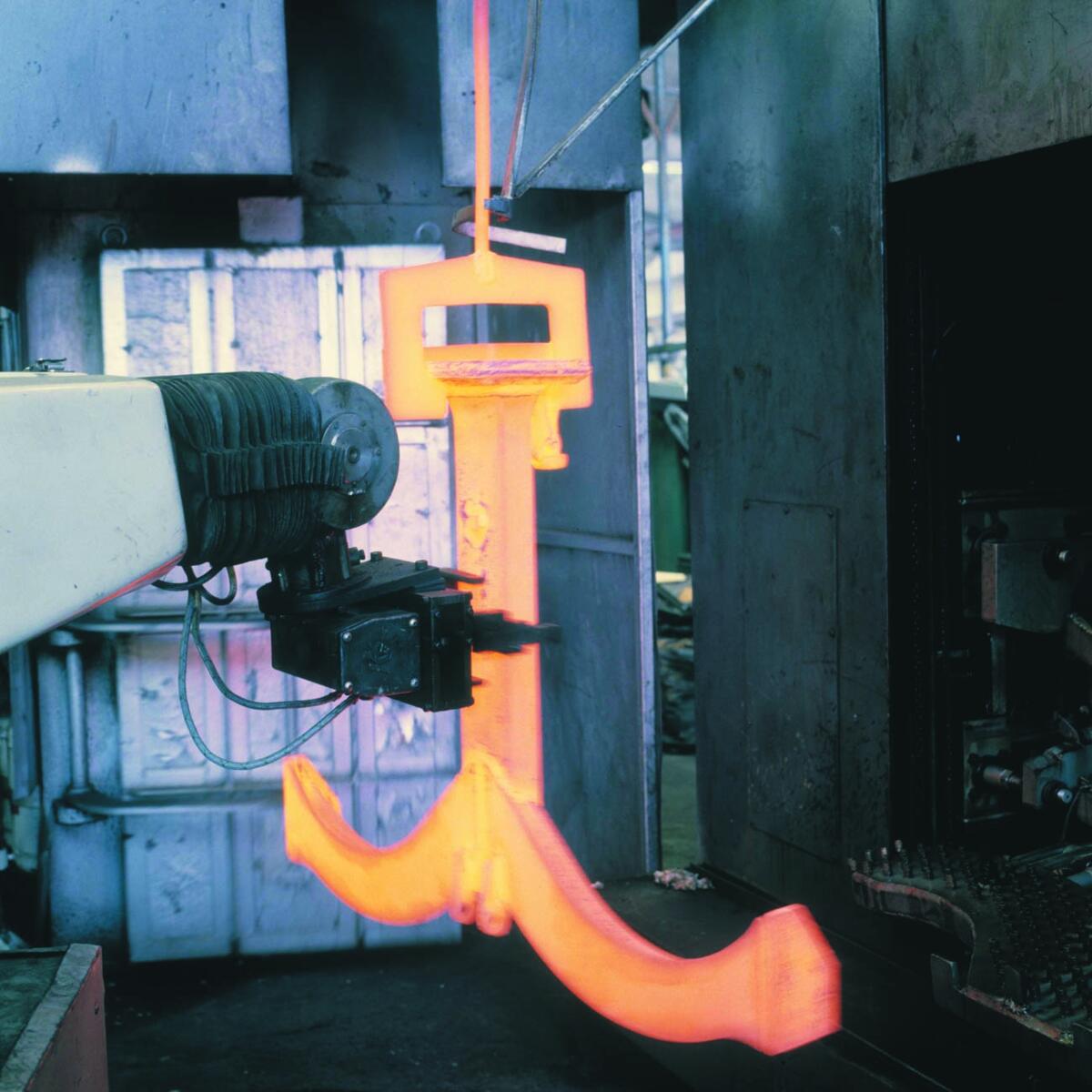A Glowing Interest In Steel
Ask practically anyone what they think is the most important aspect of Kverneland ploughs in relation to competing brands - they don't need to have much of a clue to know the answer: Steel quality and material technology.
"And we are not just talking in the past here, we are talking present and future," confirms Laboratory Manager, Arnold Furre who has worked for Kverneland since 1970 and lives, works and breathes steel.
Many men dream of becoming "men of steel" but for Kverneland Group, the steel is in plough shares and plough bodies. With an annual consumption ranging from 25,000 to 30,000 tons, Kverneland Group Klepp is a large-scale consumer of steel and much appreciated by steel manufacturers in Europe.
"We have direct contact with the major steelworks in Europe - in Sweden, Finland, Germany and France. Our communication with the technical and research facilities in these countries are also a decisive factor," explains Arnold Furre. "They help us form an invaluable network of contacts, and today I can make a phone call to ask a question or discuss issues with the top technical experts all over the world. It is also true that we are often able to help them - it is a two-way learning process."
Own Laboratories
Kverneland Group has two laboratories, both located in the original plant. The material laboratory is housed in a building from 1895 and the test laboratory in a building from 1911. The laboratories mainly perform tests of components and designs.
The steel purchased by the plant is tailor-made to the company's requirements.
"The most important factor is strength. The steel must be hard. Kverneland Group has many years of experience in the use of high-strength steel. And that is not so surprising when you learn how many stones lie hidden under the soil here in Jæren. The Ice Age laid down a challenge and we have broken it," confirms the Laboratory Manager.
One cannot discuss steel and steel quality without mentioning Bjørn Kverneland, former Technical Director. During his time at school and his experience in Germany in the 1950s, he developed his unique expertise and an avid interest in material technology. He was a pioneer in his insistence that Kverneland Group should invest in high-strength steel, and fortunately the company took his advice.
Heat Treatment For Plough Frames
"Bjørn Kverneland was the architect behind the heat treatment installation for plough frames in hall I in the new factory at Øksnevad: a vast heat-treatment plant used for the treatment of welded components to make them even stronger. At that time, the construction of such a plant was unique."
"The most dominant type of steel in the 1960s was the C-Mn steel. Then, towards the end of the decade, Boron steel appeared. This contained 0.001% of the Boron element which gave the steel an incredibly high temperate level. Prices were reasonable for this new steel," explains Furre. But the explanation for why such microscopic amounts of boron in the steel should perform such miracles is a point of much dispute - at least three theories have been put forward.
The boron steel is still predominant. But this makes it sound much simpler than it actually is: Kverneland Group utilises 14 different variants in production, for both abrasion steel and construction steel. There are also numerous alloys used by the company - so steel is, on the whole, quite complex.
Strength And Toughness
The materials utilised first need heat-treatment. Without this type of treatment, they would practically be unfit for use.
"One important factor for the strength of steel is weight reduction, which saves money," explains Furre. He adds, "But strength alone is not enough. It's the combination of strength and toughness which finally determines the quality."
"How Do You Achieve The Correct Balance?"
"The answer to that question takes us to the heart of the matter - the unique strength of the Kverneland brand. Over the years, we have learned to understand, perform and develop the processes required to achieve optimal steel quality. We built numerous heat-treatment plants with high-scale capacity in the 60s and 70s. Today, we have a number of different heat-treatment processes which are all carefully and continuously monitored for quality."
Arnold Furre is in no doubt that Kverneland Group is at the forefront when it comes to material utilisation and treatment. The most important reason behind the company's leading position is their willingness and ability to have constant contact with international product developers and designers.
"When You Consider The Leading Position Held By Kverneland Group, There Must Be Many Competitors Tempted To Follow Your Lead And Do The Same?"
"Yes, there are plenty of companies copying us out there," confirms Furre with a smile. "But we manage to keep a good number of our treatment processes - especially those related to abrasion parts - a close kept secret."




